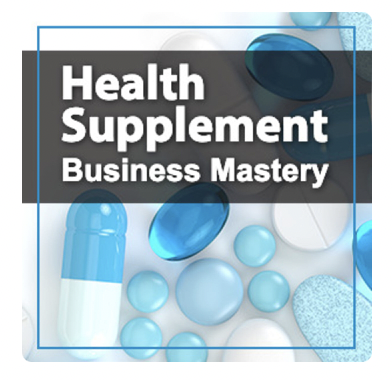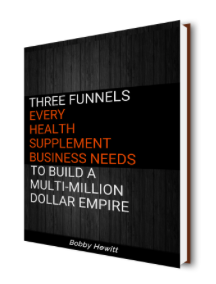
Why should someone buy from you? That is one of the top three vital questions every website needs to answer within the first five seconds of a visitors arrival on your site.
According to Ellen Langer Harvard social psychologist it is a well-known principle of human behavior that when people ask someone to do us a favor we will be more successful if we give them a reason rather than just simply ask. In fact Langer conducted a study in which the conversion rate was a whopping 94% in favor of providing reasons. 94% of people in the study complied with the favor asked compared to 60% when no reason why was given for the same favor.
The persuasion principle of providing reasons why applies to improving your online conversion rates as well. From the perspective of a product that is being sold online. It is not enough to simply list the benefits and features of the product and hope your visitor clicks the buy button. You have to give reasons why your prospect should buy.
So how do you do this online?
Your Unique Selling Proposition
The answer that just about every single marketing book out there gives in answer to that question is that you have to develop a strong USP.
USP stands for Unique Selling Proposition, which means you should promote a benefit of your product that identifies you as being different from all your competitors. USP is what makes your product different.
But just being different is not enough anymore in a world of so many products to persuade visitors to buy. Consumers have infinite choices and options to choose from online and even more websites that sell that same product.
We all want to be different, but the problem with simply developing a strong USP is that it’s not in-line with the buyer. A USP is focused on you, your product or your website. USPs are seller driven. As the name implies, they boast the selling of your product. They push the sales message and shove the reasons why your product is different down the wallets of your prospects. Providing reasons why is a common persuasion tactic, and as the study reveals it does have a positive impact on conversion rates which is why so many marketing gurus raise the USP flag and tout the importance of developing one. But there is something even stronger and more powerful than a USP. The VP sometimes referred to as the UVP or the Unique Value Proposition.
The reason why the UVP is more powerful than a USP is that a value proposition shifts the focus from the seller to the buyer. The value proposition is not about what makes the product unique, it’s not about pushing the message. It’s about pulling the buyer into the process. The process of buying vs. selling.
Your prospect has one main concern, them. Not you. Not your product. Them and only them not what makes your product unique. A Value proposition puts the focus on them. What value will your product provide to help them solve their problem?
Here’s an example:
A USP might be – Contains Dual Acting Stain Remover, To Get Tough Stains Out.
That sounds great but it does not add value for the buyer. It speaks about the product alone with a feature that makes it unique, it contains dual acting stain remover. The USP tries to add a benefit statement that qualifies the feature with – To get tough stains out. But this USP still, like all USPs focuses too much on the selling side and not the buyers side.
You need to sell the value not the benefits or features. Lets take a look at how we can save this and make it a more powerful value proposition.
A UVP might be – Remove Tough Stains With Only 1 Wash
Do you see how that shifts the focus to the value the customer will get with the product rather than what makes it different than the other products?
To create value propositions you must start with a few questions.
1. What problem is your prospect trying to solve?
2. Does your value proposition speak directly to the problem?
3. What is the impact to your customer?
4. Does your value proposition show evidence and support in the form of quantitative information?
Conduct research to understand your customers’ true problems
Conducting in-depth research is crucial for truly understanding your target customers’ problems, pains, and unmet needs. This research should inform your value proposition development and optimization. Here are some tips on researching customer problems:
– Customer interviews – Reach out to existing customers and prospects and ask about their biggest struggles and needs. Also inquire about what solutions they currently use and where those fall short. Personal conversations will provide more detailed and honest insights.
– Surveys – Create online surveys aimed at different customer segments. Ask specific questions to rate their challenges with tasks or workflows, understand pain points with current tools, and identify where they desire more help. Offer an incentive to increase participation.
– User testing – Bring representative users into your office or conduct remote online sessions to observe them using your product. Note exactly where they struggle and ask clarifying questions on their thought process and emotional response.
– Analyze user feedback – Look for clues in sources like app store reviews, tweets, support tickets, NPS surveys, chat conversations, and other places users mention their challenges. Identify common themes.
– Consult customer-facing teams – Connect with your sales, support, and account management teams who interact daily with customers. They will have invaluable insights into real customer problems.
– Examine buyer personas – Review your detailed buyer personas and ensure you have captured their goals, challenges, behaviors and scenarios where they desire solutions. Expand personas with more problem-focused depth.
– Competitive analysis – Research competitors’ messaging and value prop positioning to identify unaddressed problems and gaps in the market.
– Evaluate usage data – Analyze behavioral data like feature usage rates and flows to pinpoint where users struggle in your product and common dropout points.
Getting into the shoes of potential customers takes work, but pays off tremendously when you can craft value propositions that truly resonate. Allocate time and budget to thoroughly research your audience’s problems. The deeper your understanding, the more persuasive your value messaging will be.
Reinforce your core value throughout the buyer journey
Don’t just state your value proposition once and expect it to stick. You need to reinforce it continually throughout every stage of the buyer’s journey to drive the message home. Here are some tips:
- Homepage – Feature the value prop prominently in your headline and hero image.
- Product pages – Summarize the key value in your titles, descriptions, images, and as a callout.
- Pricing pages – Tie your pricing tiers to delivering increasing levels of your core value.
- Blog/resources – Demonstrate your value in your content titles, intros, and throughout the posts.
- Email campaigns – Craft email subject lines and copy blocks that remind subscribers of your value.
- Social media – Regularly showcase customer stories and posts that illustrate your value in action.
- Ads – Tailor ad copy and creative to align with your value proposition messaging.
- Sales collateral – Prominently feature your value prop in sales presentations, one-pagers, flyers, etc.
- Support interactions – Train team to reiterate your value when helping customers troubleshoot issues.
- Product onboarding – Use in-product overlays and messaging to introduce and frame your product around delivering value.
- Public relations – Pitch media stories that enable journalists to tell real-world examples of your value.
- Partnerships – Co-market with complementary brands that help extend your core value.
- Retargeting campaigns – Remind visitors who left without converting of your value to pull them back.
- Account management – Continue demonstrating value to customers post-purchase through training, integration, and ongoing success reviews.
Relevance and repetition are key to cementing your value firmly in the minds of buyers throughout their journey. Get creative in building value messaging into as many touchpoints and channels as possible.
Keep value propositions customer-focused, not self-focused
It’s easy to slip into making your value proposition all about yourself rather than keeping the focus on the customer. Here are some tips to stay customer-centric:
- Lead with customer needs – Start value prop messaging by directly addressing your audience’s problems, not touting your features.
- Use “you” language – Craft statements like “You will be able to…” rather than “We provide…” to keep the attention on the customer.
- Avoid superlatives – Don’t make broad claims like “the best software” that are about you rather than the value received.
- Add social proof – Include testimonials, ratings, reviews and other third-party validation to prove the value to customers.
- Share real examples – Demonstrate value through specific customer use cases and examples instead of general claims.
- Align visuals – Use images and video that depict customers benefiting from your offering rather than product shots.
- Publish customer content – Curate and share content created by customers explaining the value they experienced in their own voice.
- Reduce jargon – Avoid overly technical language and industry buzzwords that focuses too much on capabilities rather than human impact.
- Co-create with customers – Develop value propositions together with customers to ensure their perspective remains central.
- Track response – Monitor social listening, surveys, and user testing to see if messaging resonates as customer-focused. Iterate if needed.
- Reward team focus – Incentivize marketing and sales teams on customer-centric metrics like net promoter score rather than self-focused metrics like lead volume.
Keeping the end user’s needs and perspective front and center takes work, but results in much higher conversion and sales. Avoid the common pitfall of value propositions that read more like corporate brochures about you. Make sure messaging stays customer-first.
In summary, here are some key tips for creating high-converting value propositions:
- Conduct research to understand your customers’ true problems
- Get highly specific in how you’ll solve those problems
- Use concrete data and real-world examples to quantify value
- Tailor messaging to resonate with different audience segments
- Prominently feature value props on key pages across your site
- Repeatedly reinforce your core value throughout the buyer journey
- Continuously test and optimize your language and positioning
- Keep value propositions customer-focused, not self-focused
Follow these guidelines, and your value propositions will become a powerful tool for boosting conversions.
Photo Credit: by Sir Millard Mulch. Used under Creative Commons License.
http://www.flickr.com/photos/spine/ / CC BY 2.0
Discover the 3 funnels that can help your health supplement business succeed.

Listen to the Health Supplement Business Mastery Podcast for for dietary supplement entrepreneurs and marketers.




Have been looking at doing site optimization and improving the design on my website for a while, so this website has been really useful. Easy read as well, so thank you!